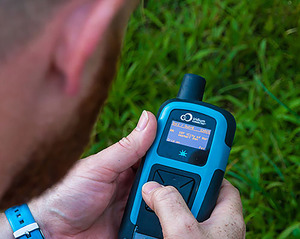
 |
Mark Sennett
Managing Editor |
 |
Kelly Rose
Editor |
| Home> | Managing Health & Safety | >Lone Worker Protection | >Protection from a distance |
Protection from a distance
15 April 2025
WHEN IT comes to protecting lone workers, distance doesn’t have to mean danger, says Alastair MacLeod.

Each year, hundreds of thousands of people work alone, many of these in remote or unpredictable environments. With no nearby colleagues to spot hazards or offer immediate help, they face risks that can turn deadly in a matter of minutes. Think for example about technical inspection of remote power lines or telecommunications infrastructure, or even search and rescue where individuals are required by the situation to operate on their own and off grid.
According to the Health and Safety Executive (HSE), around a fifth of the UK workforce are classed as lone workers. Under the HSE’s guidance, these include individuals operating away from a fixed base: social workers, sales representatives, HGV drivers, and engineers, among others.
Not all lone workers face the same type or degree of danger. A social worker regularly visiting unfamiliar housing estates might encounter volatile situations, while an engineer could be sent to a desolate wind farm during a winter storm. In both scenarios, they’re entirely reliant on technology or self-assessment to stay safe.
Under the Health and Safety at Work etc. Act 1974, employers bear a duty of care for all staff, including those out on their own. Yet the question remains, are firms doing all that they can to keep workers out of harm’s way?
Every UK organisation must formally assess risks to employee health and safety under the Management of Health and Safety at Work Regulations 1999 (Regulation 3). This includes evaluating whether being alone amplifies a known threat, something the HSE highlights in its guidance1. For example, an injured telecoms engineer atop a rural mast is far more vulnerable if there’s no one immediately nearby to help.
One practical solution is to deploy dynamic risk assessments, in which the worker themselves keeps an eye on changing conditions - be it weather, location hazards, or people onsite. However, some may argue that this culture of real-time vigilance doesn’t always take root without proper training or technology.
Technology takes centre stage
Satellite-powered IoT (internet of things) devices bring a host of benefits to different sectors, and each type of solution is typically tailored to the demands of specific industries. Take rugged models with generous battery capacity and robust global coverage, for example, that lend themselves to military, security, and heavy machinery environments. By delivering detailed satellite tracking updates and a dedicated SOS function over multiple weeks, they ensure a constant safety net for personnel who may be stationed in harsh or remote conditions. The hardware’s durability and water-resistant casing can also stand up to rough handling, extreme weather, or prolonged outdoor use.
For adventure and expedition settings, there are solar-powered trackers that function for years with minimal user intervention. These devices are often used in adventure racing events, long-distance expeditions, group travel, or for tracking valuable equipment on the move. Because the trackers can run continuously under sufficient sunlight, they are ideal for projects that require long-term, low-maintenance monitoring. Although they may not always include two-way messaging, they excel at reliably relaying position data and providing reassurance to teams scattered across wide-ranging terrains.
Finally, in scenarios where individual explorers, journalists, or recreational enthusiasts need both portability and real-time communications, compact satellite units with two-way messaging can be a lifesaver. Their small footprint makes them easy to carry in a backpack or clipped onto gear, and their ability to send or receive brief messages, even in cellular dead zones, adds a valuable layer of reassurance. Whether someone is sailing, hiking, or flying over remote stretches, the capacity to check in with contacts or call for help, without relying on mobile networks, can significantly reduce risk and improve overall situational awareness.
Across all these use cases, the core advantage of satellite-powered trackers is that they offer location tracking and emergency communication in places where smartphones simply aren’t robust enough. Smartphones are gaining the ability to access satellite networks, but the devices themselves are vulnerable to battery failure, overheating or damage, making them a poor substitute for a dedicated, ruggedised tracking device. This enhanced connectivity bolsters lone-worker safety, enabling swift responses to incidents and fostering peace of mind in industries where isolation is common, ultimately ensuring that distance and difficult conditions don’t equate to vulnerability.
Ultimately, whether it’s a rugged, multi-week device for remote security teams or a small unit built for individual explorers, the key message is the same: technology has reached a point where no one needs to be left vulnerable and isolated. As employers, and as a society, we have the power to choose robust, reliable systems that ensure no worker goes unprotected, no matter where their duties take them.
Alastair MacLeod is CEO at Ground Control.
1 https://www.hse.gov.uk/pubns/indg73.htm
- The forgotten risk to safety
- Successful legal battle exposes danger of silica dust
- Fall protection cost-cutting: a step too far?
- Safer delivery equals a safe workplace
- From the CEO’s Desk: HSE addresses the influence of 'human error'
- Disposable coveralls
- Don’t turn a blind eye to safety
- Key predictions for the safety sector in 2024
- Rules of engagement
- The energy transition: Why safety matters
























